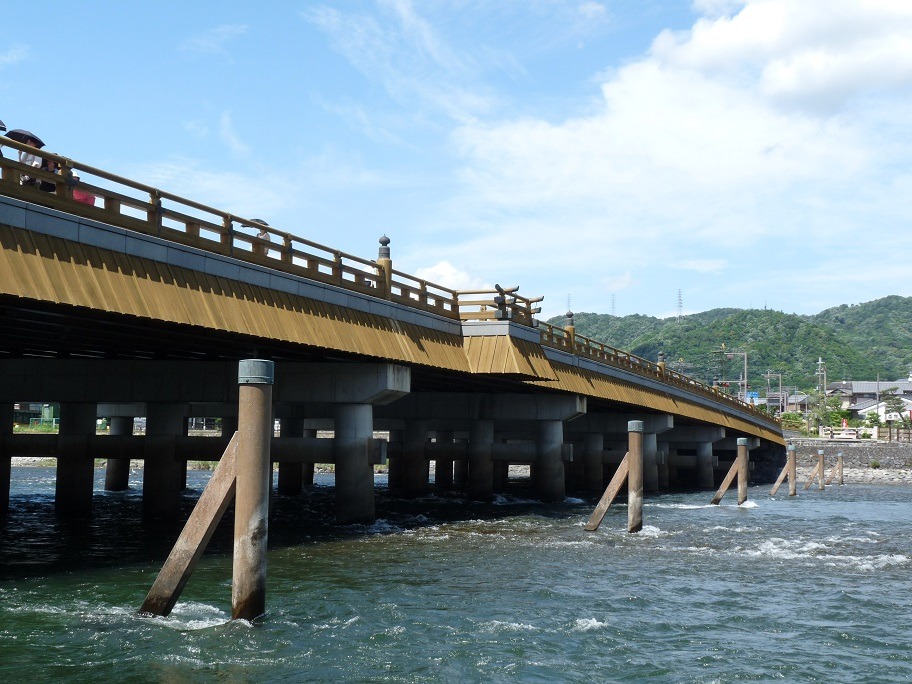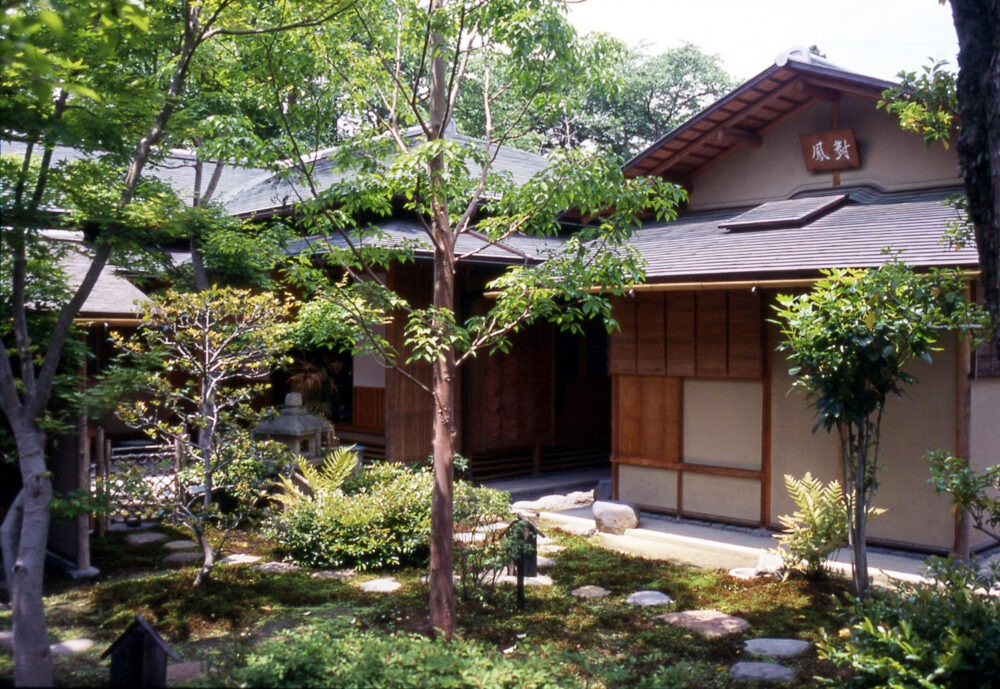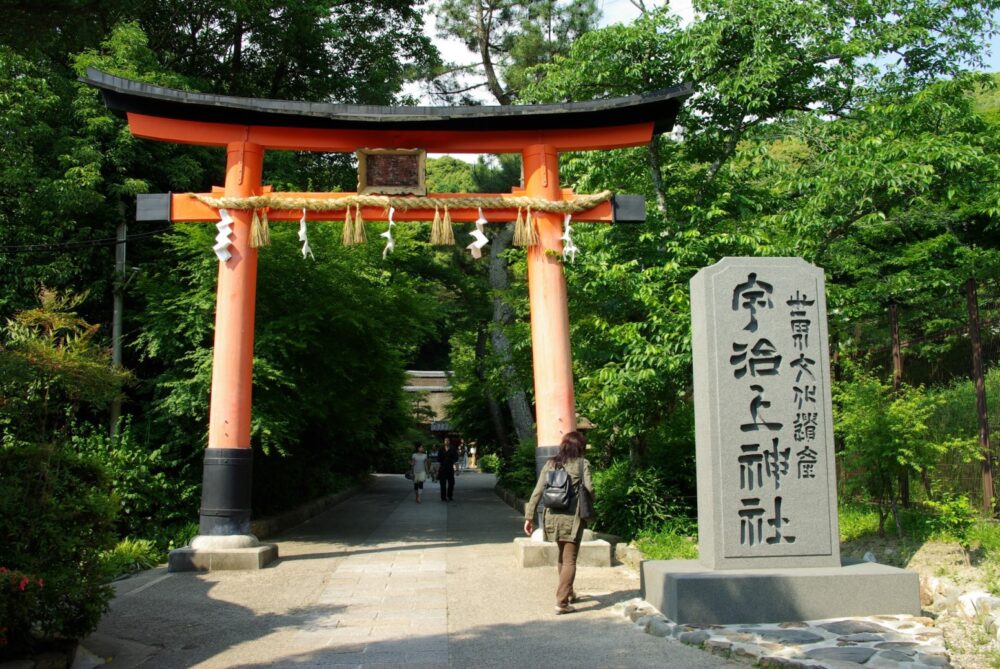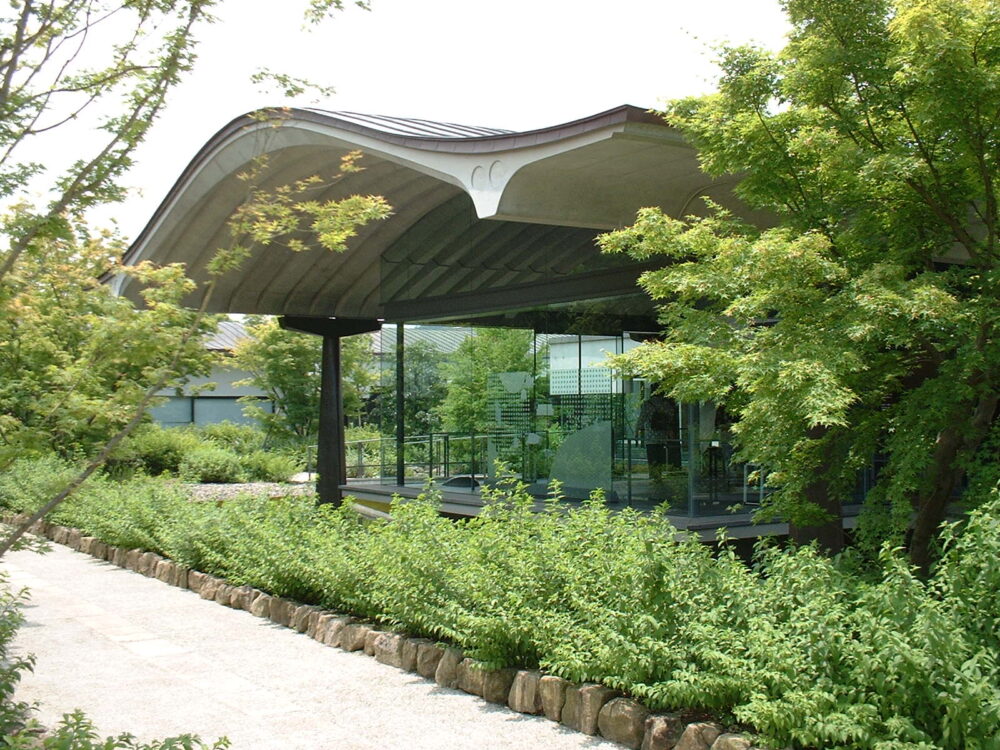Recommended Routes
Walking through the History and Nature of Uji: Tracing the Historic Sites of the Tale of Genji (Uji City, Kyoto Prefecture)

I’d like to recommend you to come to Uji City that is promoting “ the city of Tales of Genji. In Uji there are a lot of villas built in Heian period, like Byodoin, temples and villas of Genji Cran. Tales of Genji written by Murasakishikibu, a court woman, condensed the flavor and sense of Uji in the Heian period in volumes called “ Ujijujo”.
Byodoin Temple is one of the few existing buildings from the Heian period. It’s a World Cultural Heritage. Uji River and “ the trail of strolling Tales of Genji Museum is also worth visiting.
You can find a tourist’s information center behind Byodoin Temple. At neighboring Taioan you can experience a tea- ceremony. Uji is accessible by the JR Line from Kyoto Station or the Keihan Line from Sanjo or Osaka. Taking a 2 hours stroll or staying overnight depends on your schedule. Nearby Uji is Kyo-tanabe City that has Ikkyuji Temple.
Video
The Easy Historical Road to Uji: Part 1] What is the relationship between Hideyoshi and Kyoto?
Access
How to get there - By train
From Osaka
JR Osaka Station (Kyoto Line, New Rapid Service) Kyoto Station … Approx. 27 min
JR Kyoto Station (Nara Line, Rapid Service) Uji Station … Approx. 15 min
Yodoyabashi Station (Keihan Main Line, Limited Express Service) Chushojima Station … Approx. 35 min
Chushojima Station (Keihan Uji Line, Local Service) Uji Station … Approx. 15 min
How to get there - By car
From Kansai International Airport
Limousine bus … Approx. 2 hr
Approx. 10 min From Oyamazaki IC of the Keiji bipas to Uji-nishi IC
Route
- JRUji Stationon foot
- Uji River / Uji Bridgeon foot
- Byodoin Templeon foot
- Taiho-an Municipal teahouseon foot
- Ujigami Shrineon foot
- The Tale of Genji Museumon foot
- Mimurotoji Templeon foot
- Keihan Mimiroto Station
Highlights
-

Uji River / Uji Bridge
Uji bashi Bridge, recognized as one of the three most ancient bridges in Japan, is said to have been built by Douto, a monk from Gagouji, Nara, in 646. The story and origin behind this is carved on “Ujibashi Danhi (memorial plate)” at Houshouin. Uji Bridge can be see from the entrance of Keihan Uji Station, and the view from the bridge give visitors a relaxing moment.
Uji River is the common name for the Yodo River, which extends from the border between Shiga and Kyoto prefectures to the confluence of the three rivers, the Katsura and Kizu Rivers. -

Byodoin Temple
Byodo-in temple is a world Cultural Heritage and originally built as a villa for Fujiwara Michinaga, the most powerful aristrocrat of the Heian Era. His son, Fujiwara Norimichi, converted the villa to a temple and named it “Byodo-in” dedicated to the main image of “Dainichinyorai” (the Great Sun Buddha). Pictured on the back of ten-yen coin, the delicately proportioned Ho-o-do (phoenix hall) is often compared to a Phoenix just before flight.
Admission fee :Adult 700yen
Access:a 5-minute walk from Uji station Keihan Line or a 10-minute walk from Uji station JR Nara Line. -

Taiho-an Municipal teahouse
This is a tea-house standing in front of the Byodo-in Ho-o-do. You can experience full deliberation of the ceremony and informal one. Waitresses in kimono serve you ceremonial tea there.
Admission fee:Adult 1,000yen (a cup of tea and seasonal sweet) -

Ujigami Shrine
This shrine, which is a world cultural Heritage as well as Byodo-in Temple, is farmed for the oldest shrine building in Japan.
-

The Tale of Genji Museum
The museum is an excellent place for learning enjoyably about the Heian culture.
-

Mimurotoji Temple
This is well known as an old 8th century temple that keeps a statue of Buddha of the splender of the Fujiwara period in its Treasure hall. In addition, the temple is famous for the azalea and hyolrangea. Admission fee:Adult 1,000yen Access:Keihan Uji-line Minuroto station then a 15-minute walk
